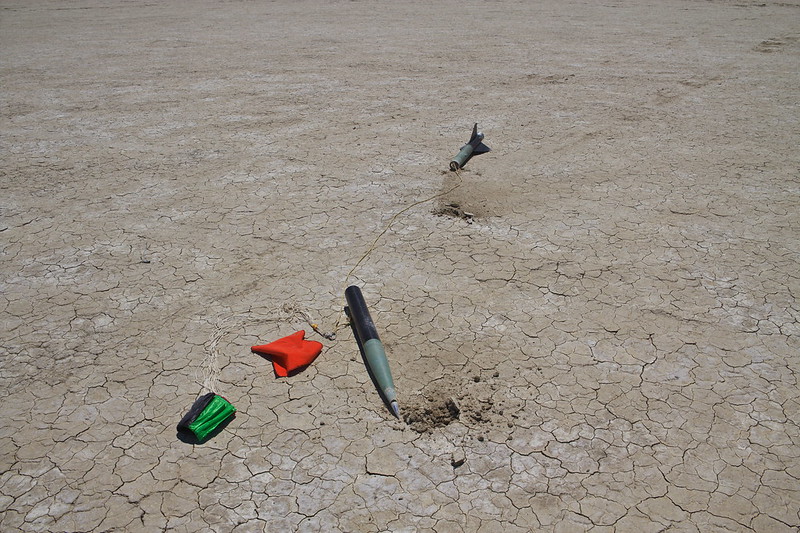- Joined
- Jun 7, 2011
- Messages
- 260
- Reaction score
- 264
One question, though: why is the CD so much higher for hexagonal beveled fins with LE .5" and TE .25" than for rounded? At Mach 0.3, the CD for rounded is 0.388, while for the hexagonal fins as described above it's 0.484, a dramatic difference. The peak CD is 0.619 for hexagonal, but only 0.525 for rounded.
Going to really get into some details here on fin airfoil drag.
In RASAero the subsonic rounded fin airfoil drag is based on Estes TIR-11 Figure 38. The subsonic rounded fin airfoil drag is not a function of Reynolds number or friction coefficient, it's only a function of the thickness to chord ratio. Whether the flow is laminar-transition to turbulent-turbulent or all turbulent (full turbulent) the subsonic rounded fin drag is the same.
On your runs you had the All Turbulent Flow box checked.
So you were comparing a rounded fin airfoil (same drag whether laminar or all turbulent) with an all turbulent hexagonal airfoil.
The better comparison is a rounded fin airfoil compared to the hexagonal airfoil with the All Turbulent Flow box Not Checked (laminar-transition to turbulent-turbulent flow).
Then at Mach 0.30 with a rounded fin airfoil (0.082 in fin thickness) the rocket power-off CD is 0.348.
At Mach 0.30 with the 0.50 in/0.25 in hexagonal airfoil (0.082 in fin thickness) the rocket power-off CD is 0.363. Much closer.
The hexagonal and NACA airfoil subsonic fin drag equations in RASAero are much more accurate than the rounded airfoil model. They are more theoretical and less semi-empirical. The rounded airfoil model is probably off by more than 0.02 (the difference in CD).
Comparing the hexagonal airfoil with a 0.50 in leading edge and a 0.25 in trailing edge diamond airfoil length to the rounded (again with the All Turbulent Flow box Not Checked) at the peak (transonic) CD:
Rounded fin airfoil (0.082 fin thickness) - Mach 1.05 - Rocket CD = 0.491
0.50 in/0.25 in hexagonal airfoil (0.082 fin thickness) - Mach 1.05 - Rocket CD = 0.478
RASAero has the rounded and square fin airfoils because some people use them. But the subsonic and supersonic fin CD models are more accurate for hexagonal, NACA, biconvex, and diamond airfoils. There's just better theoretical approaches available, and less semi-empiricism in the models.
Actually, it would probably be even better to use a hexagonal airfoil on the rocket rather than rounded. It will be a more accurate CD prediction.
Chuck Rogers
Rogers Aeroscience
Last edited:








